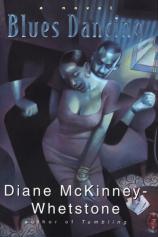Reading Group Guide
Discussion Questions
Blues Dancing

1. Johnson and Verdi "watched their blues dancing like they wished that they could." Why do you think McKinney-Whetstone chose this as a title for her book
2. "Even though Rowe fell in love with the restored version of her, he'd never really let go of the impending-doom anxiety that Verdi might leave him" (p. 13). Although Rowe is purportedly the protector, he lives in constant fear. What is he afraid of losing? Why does he feel such animosity toward Kitt?
3. Posie apologies to Johnson for overburdening him with expectation. To what extent is her expectation tied to race and class?
4. Throughout her life, Verdi seeks a balance between security and freedom. How do Rowe, Johnson, Kitt, Posie, Hortense, Leroy, and Sage navigate between these two extremes? To whom do they look for guidance? What are obstacles in their paths?
5. Kitt lives in doubt of Leroy's love for her mother. Posie never suspects that her niece is a junkie. It takes Verdi over twenty years to suspect that Johnson told Rowe where to find Verdi the night Johnson left. What is it that keeps them from seeing the truth?
6. Blues Dancing is alive with scent, sound, sight, taste, touch--each of the senses abound in Diane McKinney-Whetstone's prose. Choose an example you find particularly evocative and discuss why.
7. How do you think Verdi, Rowe, and Johnson changed over twenty years? How do you imagine each of them will continue to change?
8. Leroy tells Verdi of two roads, "a slick superhighway, sure to get the man to his destination with unparalleled swiftness" and a road on which "the destination is not assuredŠbut what a journey" (p. 290). For Leroy, where was this destination? For Verdi? Do you agree with Verdi that sometimes the "highway" is the better path?
9. Posie plunges into romance after romance, but her daughter is more careful, more restrained. What is it that finally liberates Kitt, enabling her to take a risk, to open herself to loving Bruce, and to see what happens? What was she waiting for?
10. Because Sage cannot speak, she experiences the world in colors. How do these colors infuse the prose? How does Sage's silence function in the novel? What is holding her back? What are the other incarnations of voicelessness in this story?
11. Discuss McKinney-Whetstone's use of food and eating throughout the novel.
12. Near the end of the novel, Verdi tells Johnson, "'No more giving up power that's not even mine to give up, nor yours to take,'" (p. 306). Whose power is it? What is the nature of that power? How do you think Verdi has come to this realization?
Blues Dancing
- Publication Date: October 20, 1999
- Hardcover: 320 pages
- Publisher: William Morrow
- ISBN-10: 0688149952
- ISBN-13: 9780688149956






